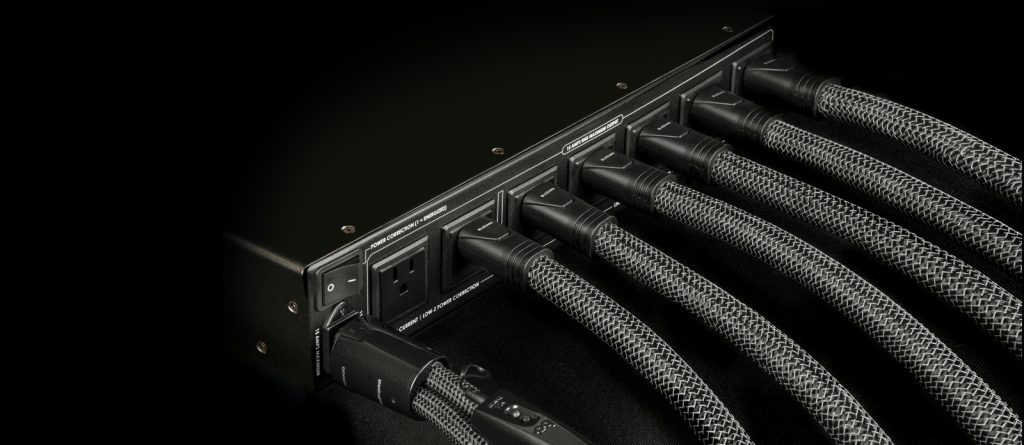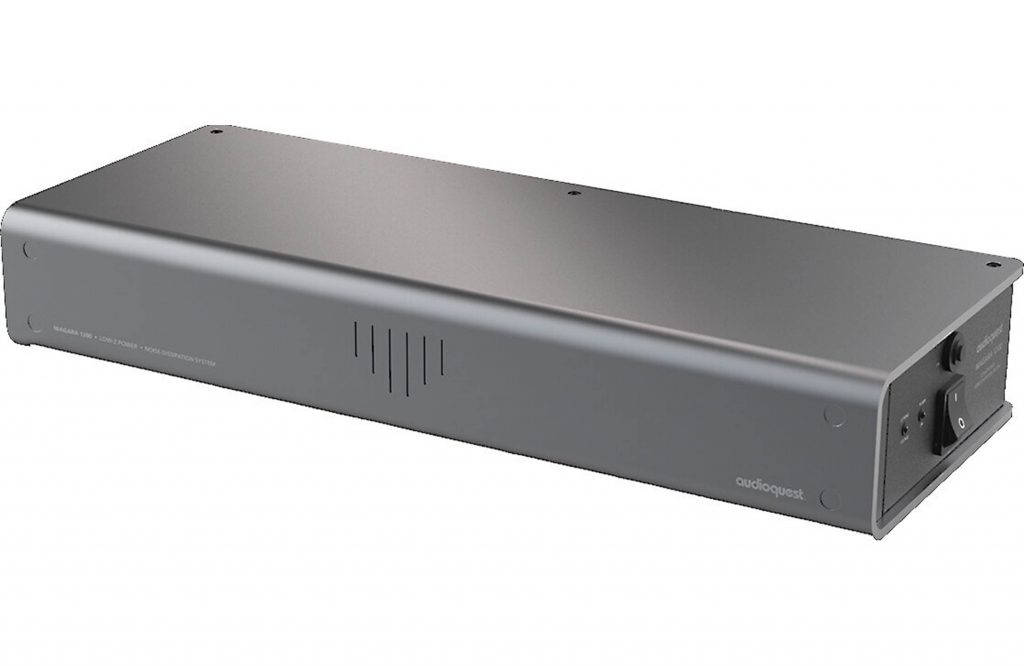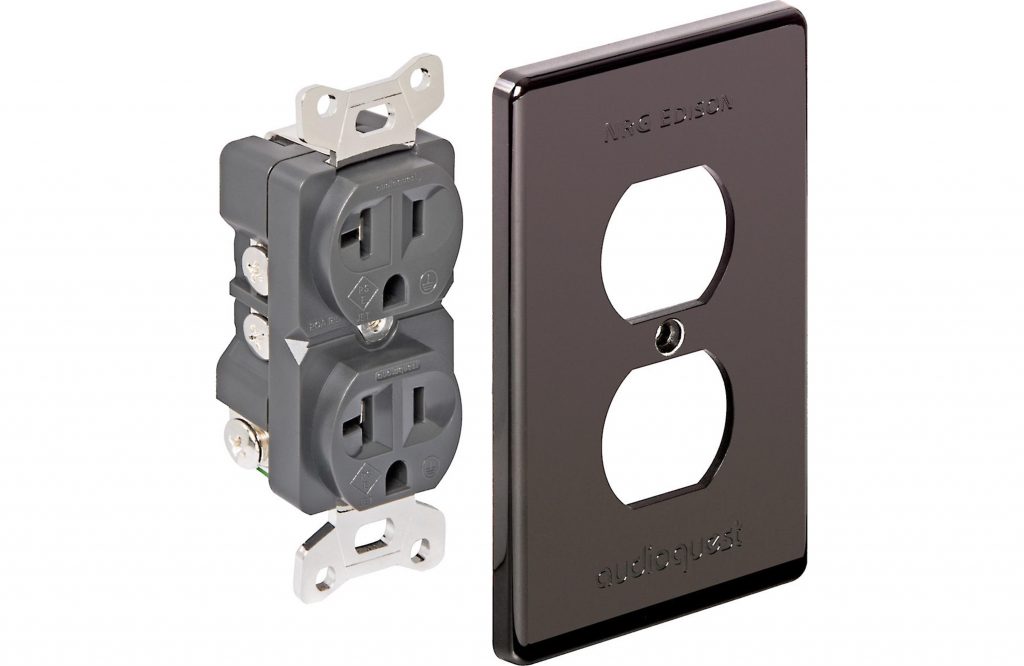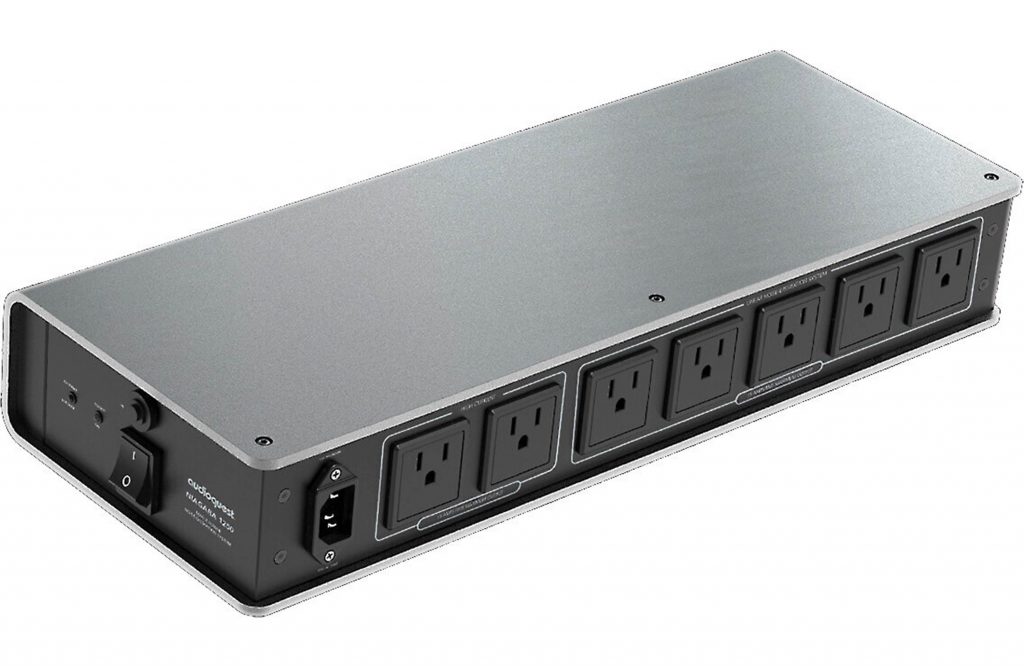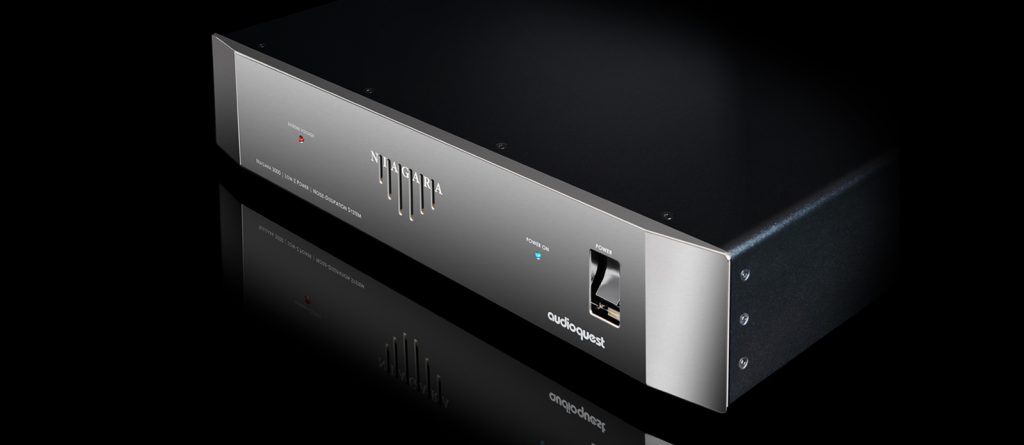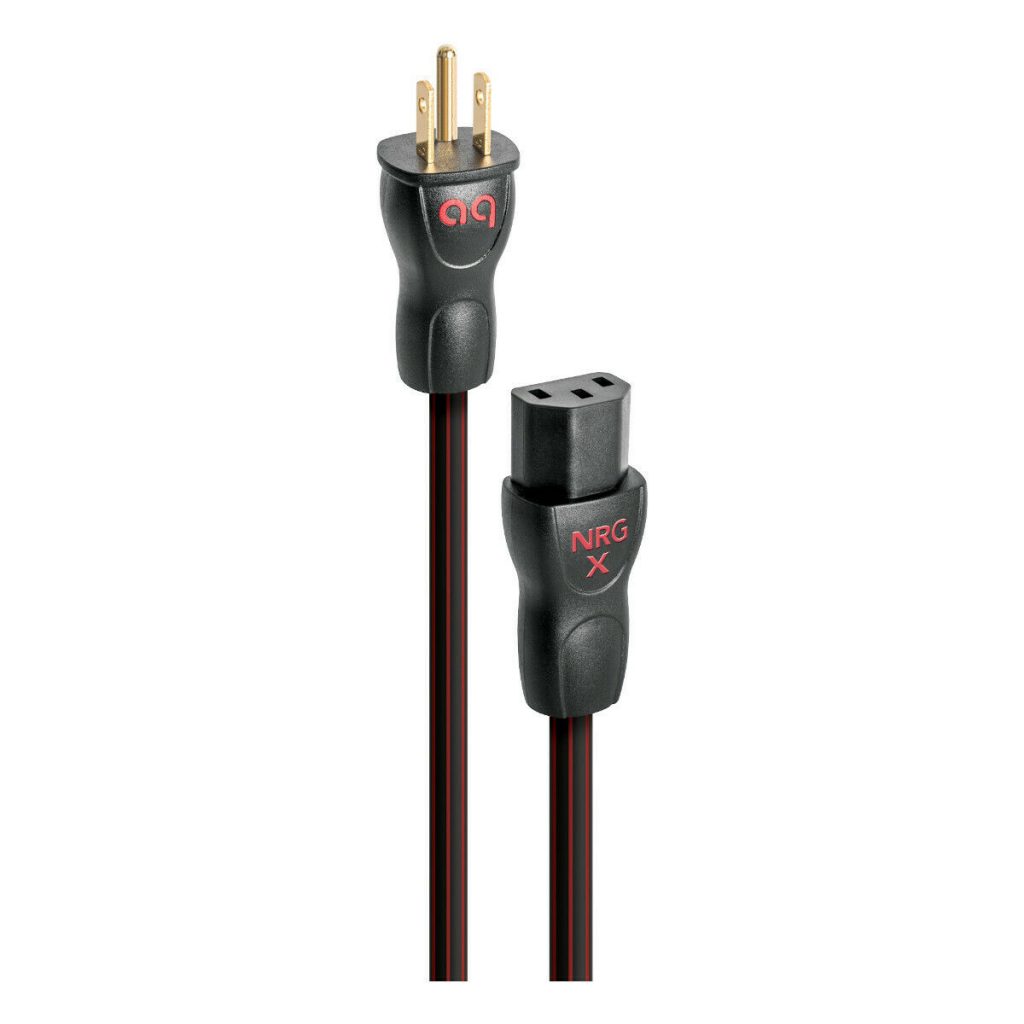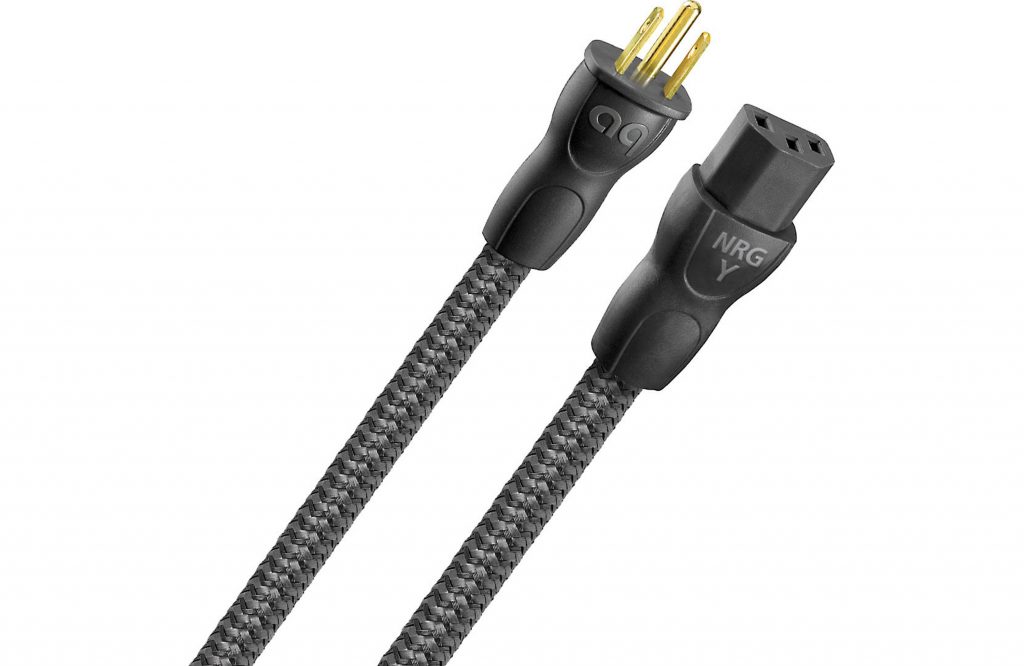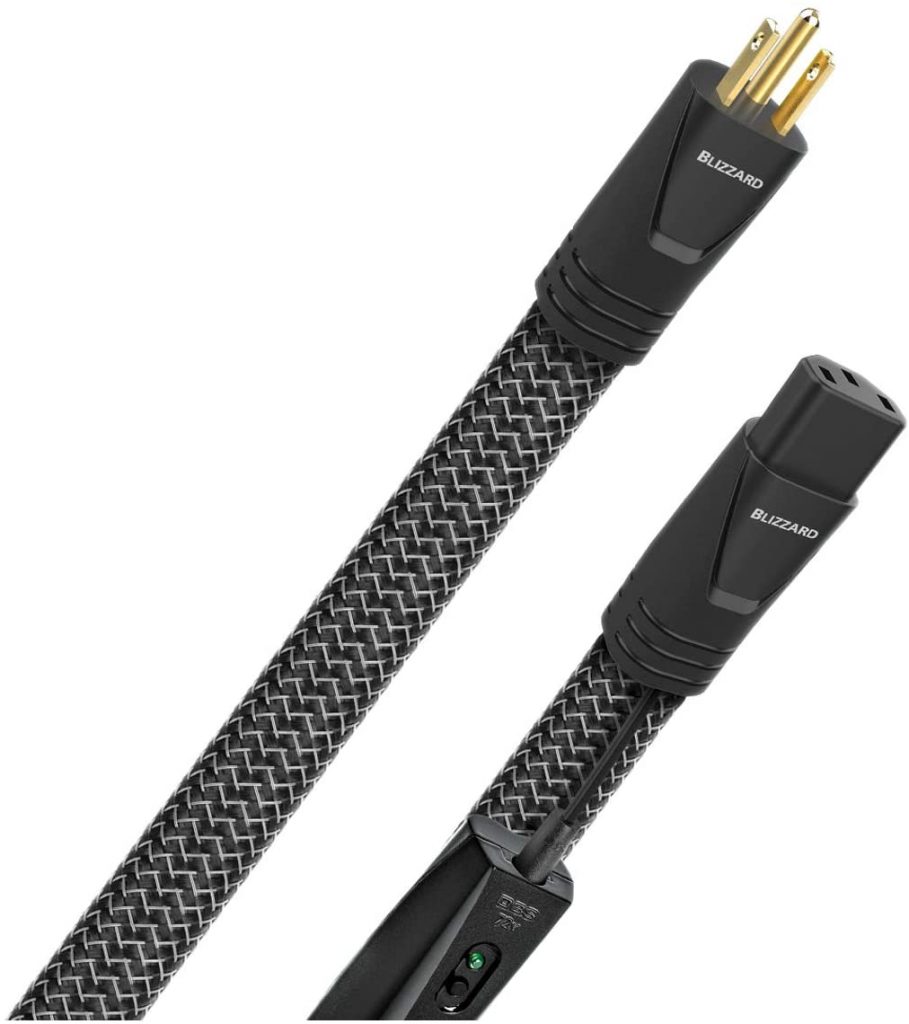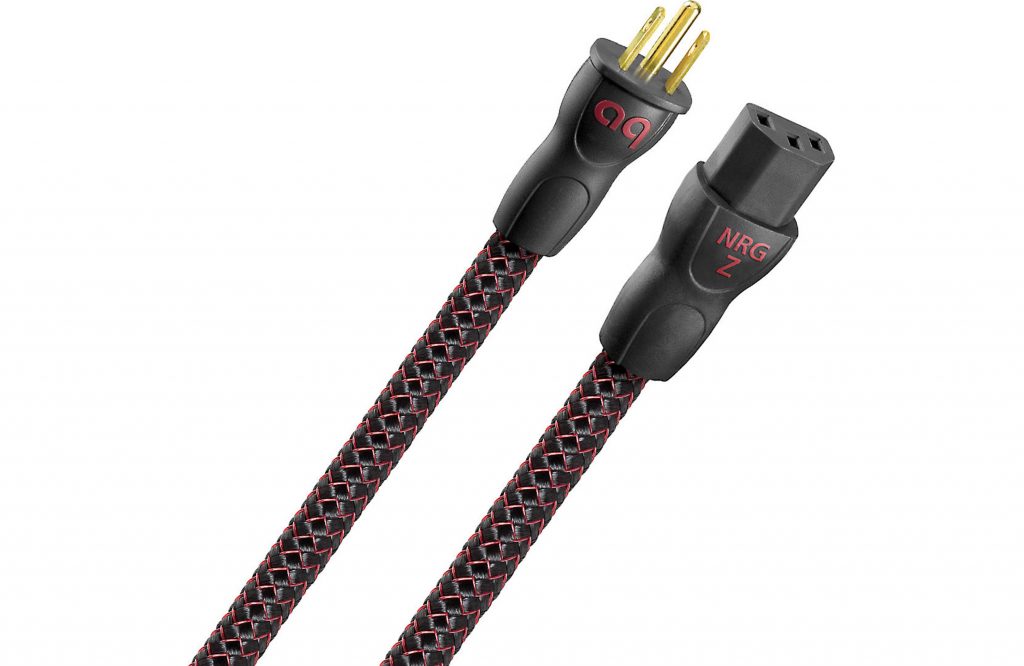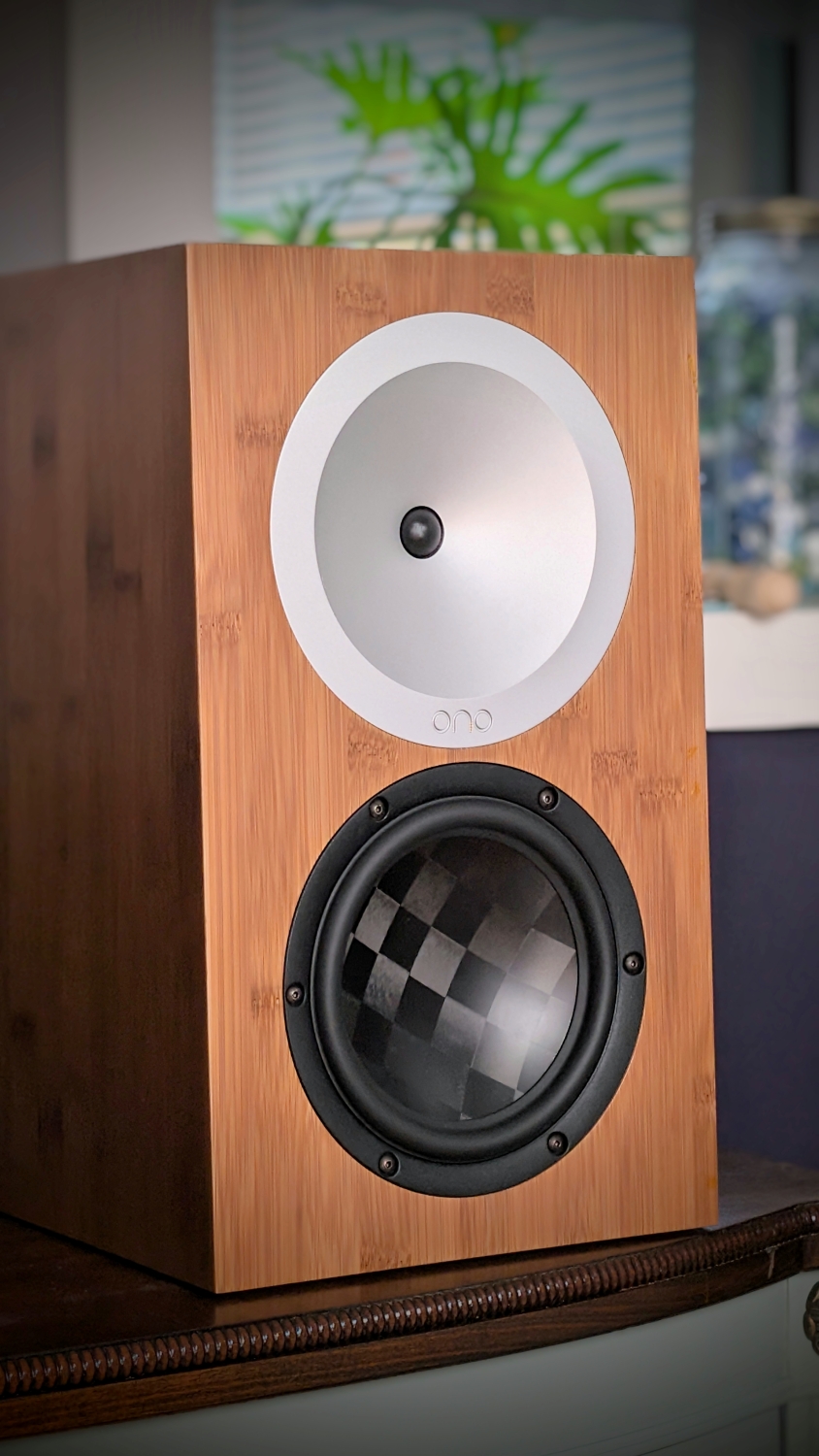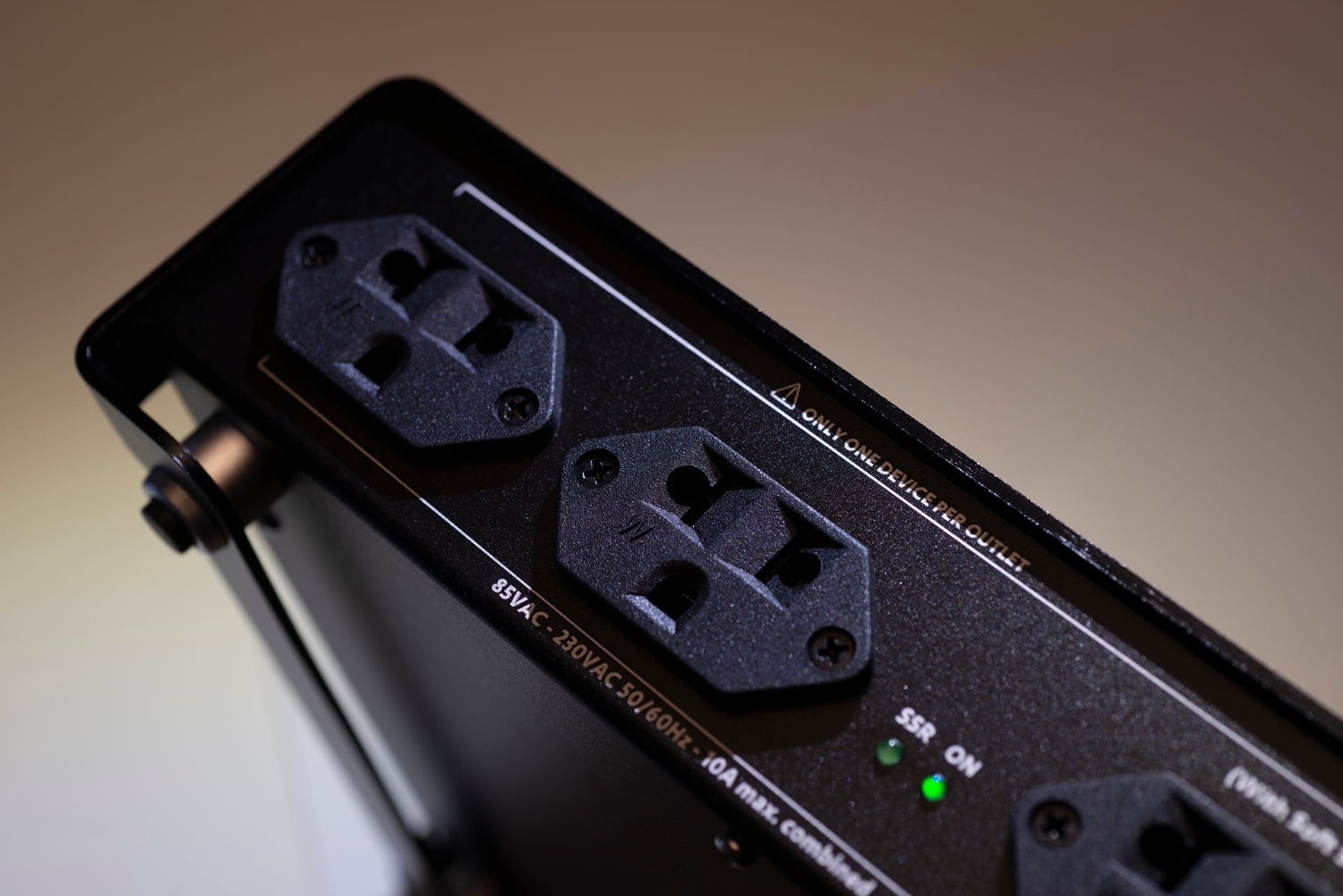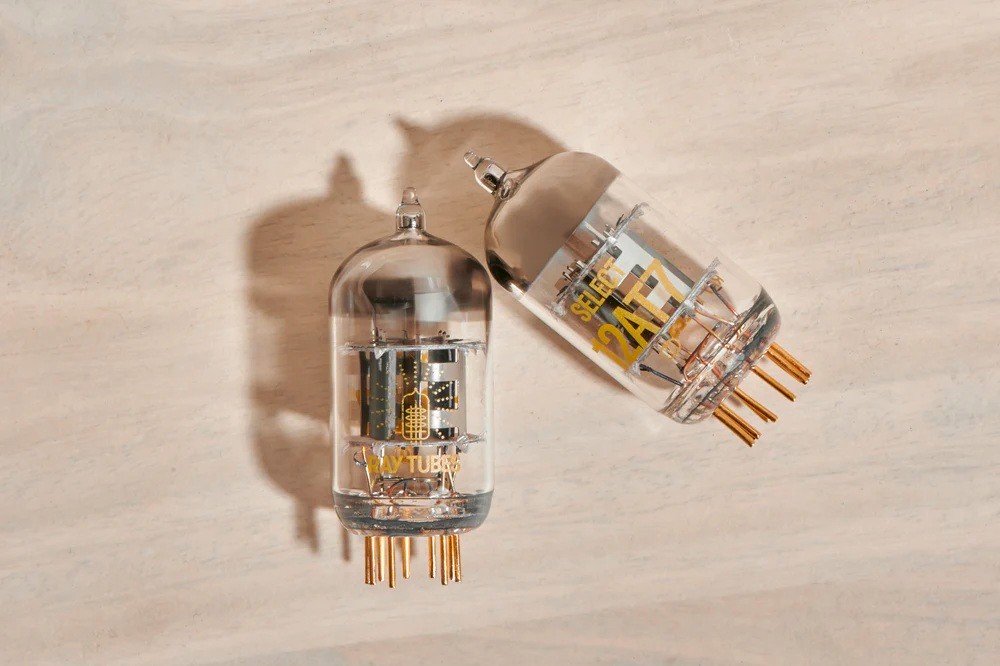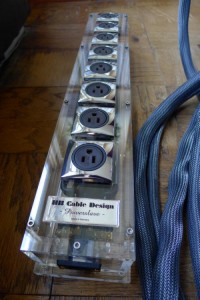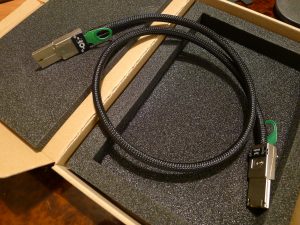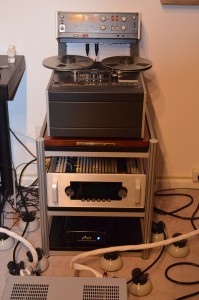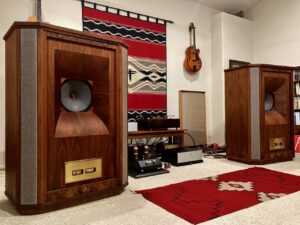I've talked here at intervals over the last couple of years about a variety of system enhancements I've employed at my home with the goal of improving system performance, reducing noise, and increasing my ability to see through more clearly to the music I enjoy. It's really shocking how seemingly simple fixes like vibration reduction products—like the AV RoomService EVP equipment isolators (you can read my reviews of those excellent products HERE, HERE, and HERE)—can really reduce the amount of congestion you would otherwise hear by reducing or eliminating structural vibrations as well as vibrations transmitted to system components. Improving that aspect of my system performance has been revelatory, to say the least—with all of the affected equipment in my system, but especially with analog sources. For digital playback, I've incorporated galvanic isolation equipment from JCAT (you can read that review HERE), as well as ethernet-enhancing equipment from Fidelizer (review HERE). And I've also used cutting edge AC-enhancing equipment from ADDPowr—their Sorcer X2 (review HERE) employed a unique approach, where adding a generated signal was designed to improve system performance. Getting the noise out definitely gets you closer to the music!
But I've also been concerned with how noise introduced by poor AC power could contribute to my system not performing to its full potential. As well as negatively impacting the musicality of my playback from all sources. When we built the new house four years ago, I was lucky enough to be able to include a purpose-built listening room that was designed with near-Cardas Golden Ratio proportions and a pair of dedicated AC circuits. I paid a premium for heavier 10-gauge Romex wiring and Hubbell hospital-grade outlets; it would be the best setup in terms of AC power in any of my systems, and I really believed it would make a big difference in my enjoyment of music. I had a pronounced slap-echo issue I had to deal with right out of the gate, but some judiciously placed wall treatments quickly got that under control. I was convinced I was well on my way to enjoying the best sound quality I'd ever experienced in the home environment.
Happily, I've been able to improve the baseline quality of my equipment stack since moving into the new home; four years ago, my total system value was probably somewhere near $15k, and it's now closer to double that point. Which has definitely improved my listening experiences, but I'd still fret about the quality of my AC power, such that I eventually ended up getting a baseline Furman power conditioner. That took care of all my source equipment, but I still ended up plugging my power amps and subwoofers directly into the dedicated outlets. And told myself constantly that it was probably good enough.
I'd been doing the bulk of my listening for the last five years with the Zu Audio Omen loudspeakers; they're a very high-efficiency design, and require relatively low wattage to get very high SPLs. Which also meant that my preamp's volume level was typically almost always somewhere in the lower third of the dial, even at ear-splitting levels. But the Magneplanar LRS loudspeakers arrived for review in October 2019, and they've been my go-to for daily listening ever since. Of course, the Maggies are a very low-efficiency design—somewhere around 80dB/watt—so they require absolute tons of high quality wattage to come even close to approaching peak performance. Wendell Diller of Magnepan has stated that the LRS was designed to be used in combination with very high-quality electronics, and that's definitely the case—they play nicely with exotic amplification, giving no hint along the way of their paltry $650 price tag. But with an impedance curve running consistently around 2.8 ohms, they present a difficult load factor; it takes one hell of an amplifier to drive them without issue to satisfying playback levels. My amps (at the time the LRS arrived) were the Emotiva XPA-1L monoblocks; although rated at 35 watts of pure Class A output, they were also switch selectable to 500 watts (4 ohms) of Class AB. Definitely not the creme de la creme of amplifier technology, but they'd easily drive the power hungry Maggies (which can require hundreds of watts for fairly normal listening levels) to exhilarating reference levels.
However, the evaluation of the LRS very quickly brought something else to my attention. With my preamplifier's volume level now regularly set to somewhere near seventy-or-eighty percent of the dial for reference-level playback, I began to notice a pretty pronounced level of electronic hash in the background. With both digital and analog sources—which really surprised me, because I really felt the quality level of my equipment setup was exceptionally good—especially at its price point. I really didn't think any of the individual components would contribute to that level of noise. Now, don't think I'm fooling myself—there are countless single audio components in cost-no-object systems out there that retail for around $30k (the total of my entire system!) But I was really taken aback that my relatively well-curated system (even at the relatively meager price point) was so affected by the electronic hash I was hearing at high volumes with both low-level signals and with no signal present. Could it be noise from my AC power source?
I've had quite a bit of interaction with Stephen Mejias of AudioQuest over a period of years; Bill Leebens suggested that I should reach out to him and discuss the power issues I was experiencing. Both Stephen and AudioQuest had been kind enough in the past to send me the DragonFly DACs as well as a selection of interconnect cables for evaluation in my system, so I reached out to him again in the middle of last year. Despite being at the peak of the pandemic at that point, Stephen responded really quickly, offering to send to me AudioQuest's Niagara 3000 Low-Z Power Noise-Dissipation System, along with a pair of AudioQuest NRG Edison AC outlets, and a selection of AQ AC cables. Prior to the shipment departing the warehouse, Stephen contacted me to let me know that the Niagara 3000 unit was currently out of stock, so he'd send the Niagara 1200 unit in its place. Which would give me a baseline impression of the Niagara product line capabilities, until the 3000 became available again.
When the initial shipment arrived, it contained the two NRG Edison AC 15-Amp outlets, the Niagara 1200 unit, an AudioQuest NRG Z3 AC cable, and an AudioQuest Blizzard w/DBS AC cable. The Niagara units are shipped without an AC cable, and require a fairly robust one to ensure that the unit is properly powered; the NRG Z3 cable was supplied for that purpose. Stephen told me that the Blizzard w/DBS cable was for connection of my power amplifier—which at that point was a Bel Canto e1X Class D (500wpc/4 ohms, and reviewed on Stereophile HERE)—its inclusion would provide better overall system synergy. Besides, [Bel Canto president] Michael McCormick had already expressed to me a definite preference for AudioQuest AC products, so this would offer an opportunity to re-evaluate the e1X in a more optimal setup. After unpacking everything, I set about by installing the NRG Edison outlets.
My late brother-in-law Richard Wise was a master electrician, and he gave me both electrical manuals and a lot of hands-on installation instruction over the years. I've in turn installed a ton of electrical cabling, outlets, switches, lighting, breakers, etc., both at the old house and the new one. Despite already having paid to have the Hubbell outlets installed in the listening room, I proceeded to remove them and replace them with the pair of NRG Edison outlets. I have the two separate dedicated AC circuits going into my listening room; my initial thought process was that one line would supply power to my amplifiers and subs, while the second would supply power to all my source equipment. But I had a conversation with AudioQuest's Gordon Rankin a couple of years ago; he suggested that all components within the room should be connected to a single dedicated AC source, which would eliminate the possibility of any ground-related noise occurrences. I followed his advice and installed both NRG Edison outlets on the dedicated circuit that ran in series to two outlet locations in my room—the pair that were originally intended for amps and subs.
The NRG Edison AC outlet installation proved to be the single most difficult and labor intensive electrical process I've ever undertaken. The robustly-plated NRG Edison outlets are both heavier and bulkier than any I've ever installed; I was completely wowed by their heft as I removed them from their packaging. And getting the NRG Edison outlets connected to the very stiff 10-gauge Romex was more an act of sheer will than anything else; fortunately, I'd had metal boxes installed in the dedicated line locations. I'm pretty certain that the intense pressure required to get the NRG Edison outlets and wiring maneuvered into place would probably have broken the cheap plastic boxes typically found in new home construction. After getting the faceplates on, I connected my dual subs with their manufacturer AC cords, one each to the NRG Edison outlets, and I connected the Niagara 1200 unit with the supplied NRG Z3 AC cord. The 1200 includes seven outlets total, two of which are designed for high current device connection (like power amps, or subwoofers); I connected the Bel Canto amplifier with the Blizzard w/DBS cable to one of those, then connected the rest of my equipment stack to the five remaining source outlets.
The Niagara 1200 Low-Z Power Noise-Dissipation System is the lowest priced unit in the Niagara product line, and features not only two outlets with high power current capabilities, but all seven outlets offer over 19 octaves of what AudioQuest describes as their Level X differential filtering. All Niagara Series models include those capabilities, but the higher-priced models (like the Niagara 3000 and up) also include what AQ calls Transient Power Correction. Garth Powell of AudioQuest (the Niagara Series designer) offered some commentary on AC power in general, and discussed the design goals of the Niagara and NRG Edison equipment: "The NEMA Edison duplex outlet is a 'grandfathered' design that's nearly a century old. It was meant for 110VAC at 10 amps. Now 120VAC at 20A, and all that's changed is mostly cosmetic. The brass material is soft and thin, it was made for marginal safety concerns and to be inexpensive."
Garth continued: "In an audiophile system...we have special tools to tighten our speaker cables to the binding posts, and RCA or balanced XLR connectors feature a vice-like grip. Yet the poorest connector in the system is the one that carries the most RMS (average) current, transient current, and AC voltage? At AudioQuest, we reverse engineered every premium-audiophile power outlet we could find. Some were substantially better than average (a few [were] actually worse), but what I saw too often was cryogenic freezing, or rhodium plating over a mostly stock design that simply wasn't up to par. I decided to not only use beryllium copper base metal for its high spring-strength, but all metal parts are up to 40% thicker than a typical NEMA or hospital grade AC outlet. The only plating is thick direct silver using what's called the "hanging" plating process. This assures that induced radio-frequency noise has a low-impedance path back to the electrical panel and Earth ground. Further, it's low-impedance at radio frequencies. The plating covers all modes, Line, Neutral, and Ground. Many premium power outlets do not.
"For audio-video performance, details count. Noise-dissipation is a drainage system, and we do not want a power outlet to interfere with the drain path back to Earth. Additionally, a typical power amplifier can require instantaneous transient current as high as 70 amps peak. The lower the impedance of the wall connection, the better the delivery of the transient current. [There's] less current compression. There is no transient power correction circuitry in the Niagara 1200, there was no budget or room. However, the high-current outlets were designed to make certain nothing was done to raise AC impedance; they still have appreciable linearized differential filtering, discrete patented Ground-Noise Dissipation circuits, and considerable isolation from the source outlet filters. The outlets used for the Niagara 1200 and Niagara 3000 are not the duplex type NRG Edisons (we did not have the space or the budget for those). However, they are proprietary, beryllium copper base metal, with thick direct plate silver contacts. The metal contacts are not quite as vice-grip tight as the NRG Edison, but [are] very secure and exceptionally low-noise [and are] second in performance only to the NRG Edison duplex outlets.
"Transient power correction (TPC) [in the Niagara 3000] provides up to a 55 amps peak transient current reservoir (up to 25 mS) for the power supplies of any power amplifier, regardless of its active circuit devices or class of operation. [Power supplies] absolutely operate more efficiently when feeding the power amplifier the joules of energy required for audio signal transients." That's a lot of technical jargon to absorb, but suffice it to say that there's a great deal of science in AudioQuest's AC power designs. Along with over-the-top improvements—as with the NRG Edison AC outlets—especially when compared to those commonly found in new home construction. AudioQuest also has an excellent white paper that's in PDF form and can be downloaded from their website; it offers a lot of information (mostly in layman's terms) with clear and cogent explanations of how their AC power technologies can improve audio playback.
I continued with this equipment arrangement for a couple of months; but made a couple of noteworthy observations early on. Within the first few hours of having my equipment stack connected to the NRG Edison outlets, I noticed a newfound ease in my system's musical presentation; and significantly improved bass response from the subwoofers. With not only deeper, but more taut and tuneful bass—and the subs were directly connected to the NRG Edison outlets, and not experiencing any of the benefits of the Niagara 1200 unit. I also noticed that the bass seemed to be presented at a somewhat lower level than before, and required some upward adjustment to get the bass content more properly aligned with the remainder of the musical spectrum coming from the Magneplanar LRS. I questioned Stephen Mejias about this, and he remarked that my observations were not unlike what they'd been hearing from other users; the lower overall impedance and cleaner AC signal presented by the NRG Edison outlets allowed my subs to play with less distortion. Thus my observation that their output level had been lessened; I was actually hearing a cleaner, clearer output signal from the subs, and I was stunned by the improvement in bass content and clarity gained from their connection to the NRG Edison outlets.
The Bel Canto e1X amplifier (MSRP $6k USD) was an already impressive performer, with perhaps the clearest midrange presentation of any power amplifier I'd ever evaluated in my system. That said, the gains from having the AudioQuest Blizzard AC cable attached and inserted into one of the Niagara 1200's high current outlets was not insignificant compared to what I was previously hearing. The DBS option (Dielectric Bias System) included with the Blizzard AC cable features an attached, battery-powered unit that keeps a constant bias charge on the cable, whether your system is powered on or off. This prevents any time delay or phase-shift effects from impacting the AC signal powering your equipment, ultimately resulting in your music always emerging from a blacker and clearer background. I know this is "blue sky" territory, but I can't argue with what my ears tell me is happening (mostly not happening!) with my music playback following the addition of the Blizzard DBS cable and Niagara 1200.
After using the Bel Canto e1X for several weeks in the new AC arrangement, I decided to insert my pair of Emotiva XPA-1L's into the system. After living with the e1X for months, I'd become completely disenchanted with the sound of the Emo amps, and had really considered getting them ready for sale, or at least for assignment to the scrap heap. Just for kicks, I thought I'd hook them up to the new setup to see if I could hear any kind of difference in what I was beginning to believe was their otherwise pedestrian musical presentation. To my great astonishment—and even attached with the manufacturer supplied cords—I felt their presentation had gained a notable degree of clarity and musicality; I kept them in the system for at least a month at that point, I was so impressed. I reached out again to Stephen with my impressions; he told me that the Niagara 3000 would be shipping soon, and that along with it, he'd send some additional AC power cords. Mejias insisted that the Emo amps and my twin subs should all be connected by similar upgraded AC cords, so when the new shipment arrived, it included a three meter pair of NRG Y3 AC cables to connect the subs, and a two meter pair to attach the amps to the Niagara 3000. Of course, it included the Niagara 3000 Low-Z Power Noise-Dissipation System unit, along with a Blizzard w/DBS-2 meter cable for attachment of the new Niagara unit, and an additional Blizzard cable for attachment of my PS Audio Gain Cell DAC/Preamp. Also included were two NRG X3 AC-2 meter cables, which I used to attach my Yamaha universal SACD player and my Musical Surroundings Phono Preamp/LPS system to the new Niagara unit. When all was said and done, all of my equipment stack that was able to employ an upgraded power cable had been connected with one from AudioQuest.
When the Niagara 3000 unit arrived (I recently reviewed the 3000 for Stereophile, and you can read that complete review HERE), Stephen Mejias suggested that I connect the subs to the 3000 as well. I actually had more equipment than the 3000 could easily accommodate, so I ended up connecting all my source equipment to the 3000. And whichever amp(s) were currently in use were connected to the Transient Power Corrected high current outlets on the Niagara 3000 (the improved technology rendered the Bel Canto e1X with even more striking clarity). I connected the dual subs to the high current taps of the Niagara 1200, and I connected my turntable power supply and phono preamp chain to the 3000. I'd intended to set up my old Rega P2 table for dedicated mono playback; I dragged it out of the closet and connected its power supply to the 1200, but connected its phono preamp to the 3000.
Is adding almost $8k in AC power conditioning, exotic AC power outlets, and relatively exotic AC power cables an insane move to improve the performance of a $30k system? My initial impulse would have been insane—probably more like completely bonkers! That said, with all the AudioQuest equipment in place, my music playback has taken on a much greater sense of overall clarity and musicality. And the noise floor is about as close to zero as you could possibly get. My principal analog playback setup features a ProJect Classic XB turntable (just added the aluminum subplatter upgrade, review forthcoming on PF), fitted with a Hana SL cartridge and a Funk Firm Achromat, along with a Musical Surroundings Phonomena II+ preamp powered by a Michael Yee linear power supply. At the price point ($4.3k), I wouldn't have thought it could get much better in my particular financial demographic. But prior to the arrival of the AudioQuest AC equipment, when I'd turn the volume up to reference levels while spinning an LP, you could hear not only the gentle hissing of the phono preamp/cart combo, but also a significant level of an electronic buzz in the background. Now—at reference levels—in quiet areas of LPs, or in between tracks, you hear even less of the gentle hissing than before, and with nothing playing, you can turn the volume to max and there's zero trace of the aforementioned electronic buzz.
That outstanding level of noise reduction is also equally apparent with digital sources; I use a Euphony Summus media server/player/streamer (it's also just been upgraded with a separate endpoint unit that elevates its performance significantly—review also forthcoming on PF). It's directly connected to my digital music library with a 2TB Samsung EVO SSD, and via hard-wired Cat 7 ethernet to a Fidelizer EtherStream network switch for listening via Tidal or Qobuz. And it also has the JCAT USB Isolator for additional galvanic isolation. And that chain feeds into my PS Audio Gain Cell DAC for final output. Despite all that goodness in a nearly $7k package, I'd still hear an electronic buzz in the background of reference level music playback, especially when no music was playing. In the current AudioQuest AC enhanced system, that noise is simply, completely gone. Nada, zilch, zippo—nothing.
Both Stephen Mejias and Garth Powell have told me that one of the greatest benefits from the AudioQuest Niagara range of products is that by presenting your equipment stack with really clean AC power it allows your equipment to operate at peak efficiency. And Powell has also stated in emails to me that AQ's continued research implies that the Niagara equipment may also allow your equipment to run slightly cooler—this would be an especially important consideration with amplifiers, particularly those that run in higher biased Class A. I've actually observed that with my Emotiva Class A monoblocks, which seem to run several degrees cooler when attached to the Niagara units than they did before. More efficient and cooler operating electronics will ultimately translate into less wear on your equipment and lower energy bills—it's an all around win-win.
I have to believe that the range of AudioQuest's AC cables sent to me is having a definite impact on the quality of my music playback. AQ's AC cables are made from premium copper and materials, and there's seriously good science in their designs; this allows them to reduce levels of RF-related noise, and to offer high-current transfer of AC power when needed by power amplifiers. This is particularly true of the cables that employ the DBS system; I was at first skeptical that adding the Blizzard w/DBS cable to my preamplifier would make a significant difference, but I'm hearing less noise, and an overall increase in clarity and musicality. The selection of cables Stephen Mejias had sent to me fall across several levels of the AudioQuest AC cable spectrum, and not all of them resemble the archetypical "garden hose" one comes to expect of aftermarket AC cables. Of course, the Blizzard w/DBS, which comes from AQ's "Wind" series of AC cables totally falls into the "garden hose" category, but if you're looking for unrestricted current flow, don't fret over the cable's diameter! The AC cables from the "NRG" series were much more manageable in diameter, but they all were much more robustly constructed than any of the stock cables they replaced. And while the AudioQuest cables all possessed a greater than average degree of stiffness, only the Blizzard w/DBS cables presented any level of difficulty in terms of cable management. The inclusion of such a variety of AC cables at one time makes it nearly impossible to offer performance specifics based on individual cable placement, but with the unquestionable leap in system synergy I've experienced, there's obviously no going back!
The Niagara 3000 offers a tremendous technological leap in performance over the Niagara 1200; the inclusion of Transient Power Correction in the 3000 creates an available high current reservoir that should satisfy the needs of even the most demanding power amplifiers. And the 3000 has elevated levels of what AudioQuest calls Level X differential mode filtering, which provides wide-bandwidth noise filtration consistently across multiple octaves. The 3000 provides 21 octaves of filtration, versus only 19 octaves for the 1200. Both units incorporate AQ’s Patented Ground Noise Dissipation technology, featuring three isolated banks of noise reduction scattered across all seven outlets, helping to provide superior noise reduction and improved resolution. While it goes without saying that the Niagara 3000 gives a definite performance edge, the Niagara 1200 is no slouch in terms of the excellent level of current delivery and noise reduction it offers. It’s much more than just an enhanced power strip for your components, and will easily satisfy the needs of most relatively modest audiophile systems. By providing clean power to my equipment stack, and in combination with the Niagara 3000, the Niagara 1200 has become part of a compelling AC noise dissipation system that has greatly enhanced my enjoyment of the music that makes life worth living.
I've been told recently that my journalistic approach to audio isn't quite as scientific as it should be. And that few of the benefits I'm hearing with the AudioQuest conditioning equipment, outlets, and cables in place in my system could be scientifically proven. With regard to the Niagara range of products enhancing the quality of your system's AC power, consider that the current power grid in the US is seriously antiquated and totally overtaxed in daily use. And with the relatively low quality of builder grade power outlets (at a cost of about 50 cents each) and common 14 gauge Romex wiring, it's not too much of a scientific stretch to imagine that audible improvements are easily obtainable with even just higher quality power outlets like the NRG Edisons. I know what my ears are telling me; I can clearly hear a significant lessening—or complete elimination of any associated noise—that I have to believe is due to the less than stellar quality of my AC power. And the Niagara units provide the added benefit of Non-Sacrificial Surge Protection for all connected equipment, and can withstand surges and spikes of up to 6000 volts or 3000 amps without sustaining any damage—while remaining completely transparent and sonically non-invasive.
Does $8k worth of AudioQuest AC Power enhancements make an appreciable difference? Absolutely! While reduction of any system noise is always a positive, the improved level of clarity afforded to system components and music sources allows one to achieve a more Zen-like state during music playback. There's more air and a greater degree of transparency, and subtle levels of detail and ambient cues previously obscured by the haze are almost magically unmasked. With the AudioQuest AC equipment in my system, hearing so much of my favorite music now is almost like hearing it for the first time!
I can't recommend the AudioQuest AC conditioners, outlets, and cables highly enough. They've elevated my system synergy and overall performance level to a point I'd never have believed possible, and would make an appreciable difference with audio systems at any price point.
Niagara 1200 Low-Z Power Noise-Dissipation System
Retail: $999.95 USD
NRG Edison AC 15-Amp Outlet
Retail: $179.95 USD (2 supplied)
Blizzard w/DBS AC Power Cable (2m)
Retail: $749.95 (3 supplied)
NRG Z3 AC Power Cable (2m)
Retail: $279.95
NRG Y3 AC Power Cable (3m)
Retail: $189.95 (2 supplied)
NRG Y3 AC Power Cable (2m)
Retail: $159.95 (2 supplied)
NRG X3 AC Power Cable (2m)
Retail: $99.95 (2 supplied)
AudioQuest
All images courtesy of AudioQuest




